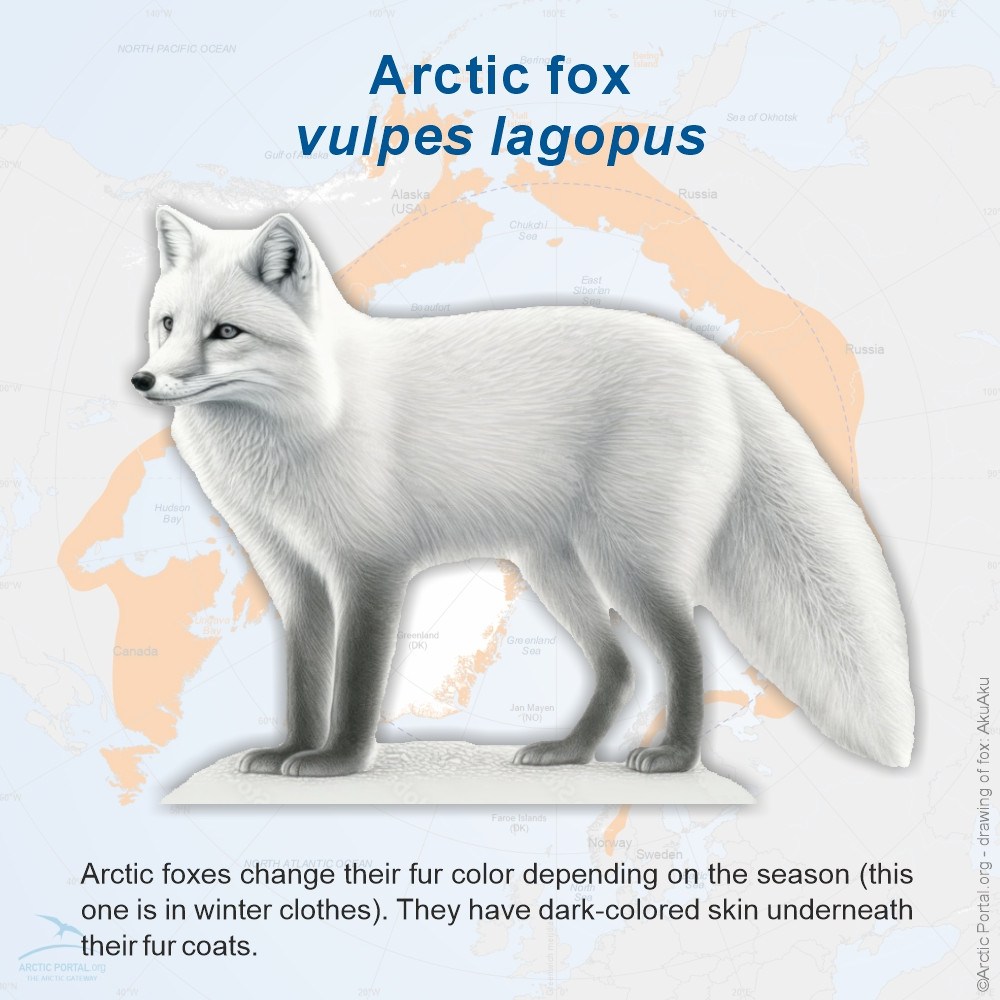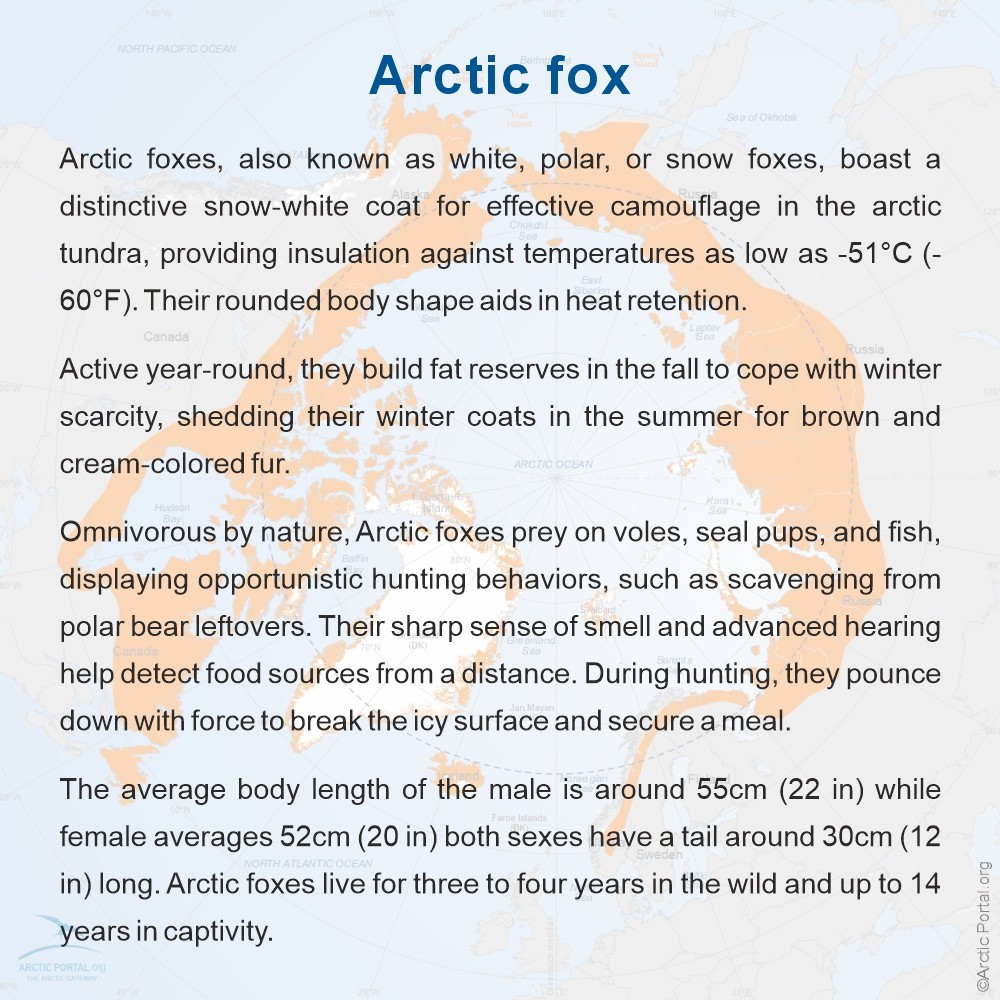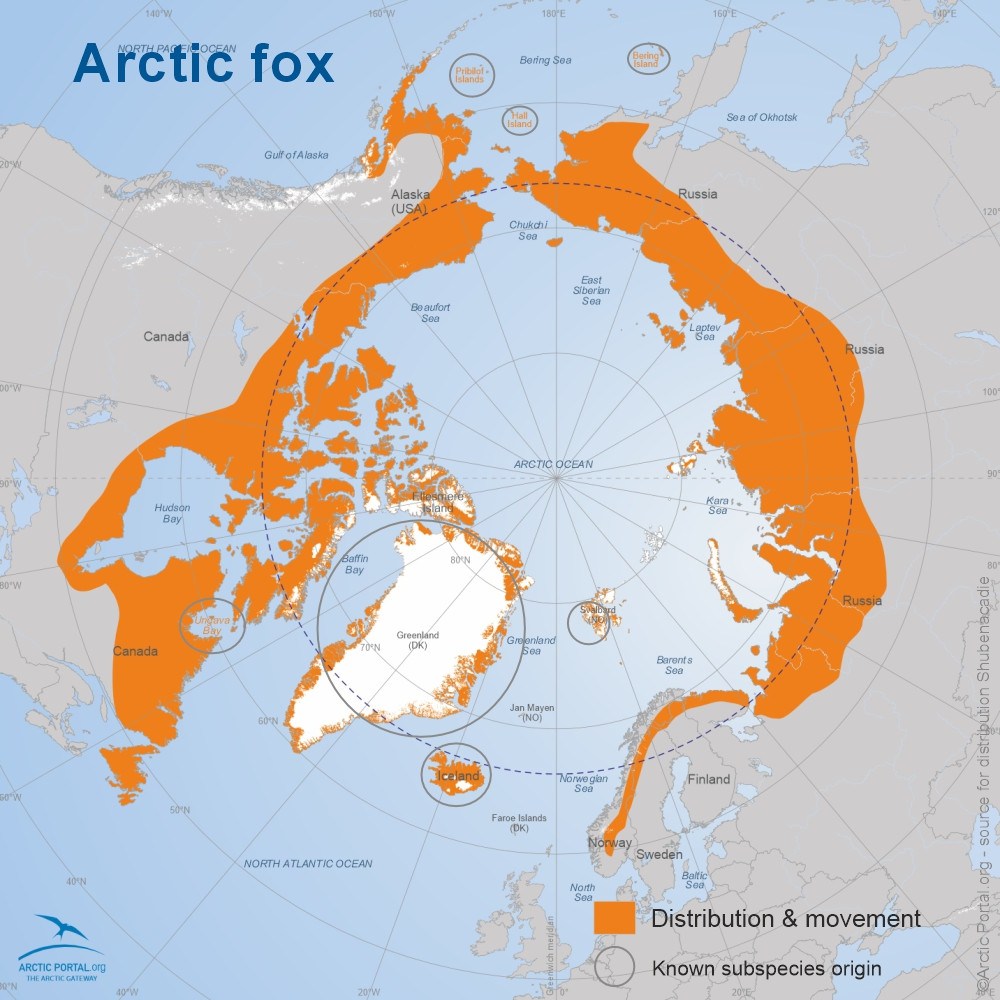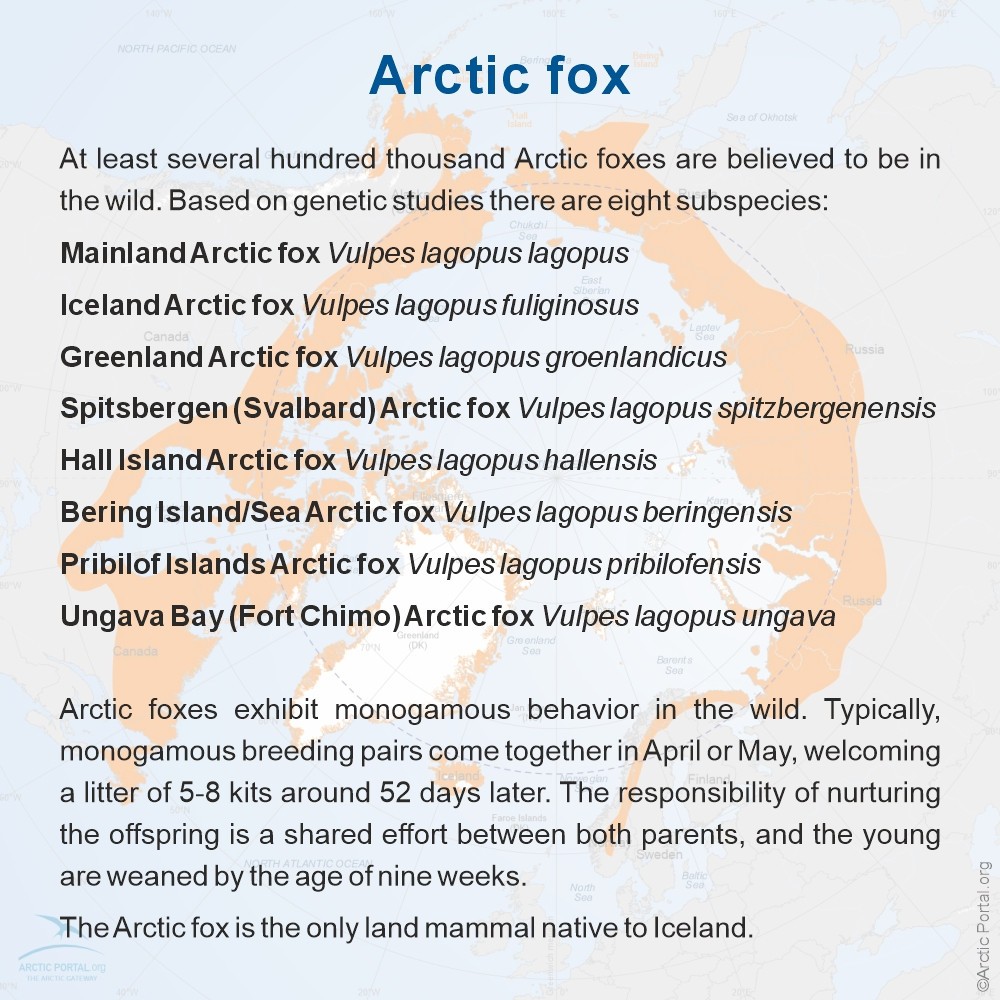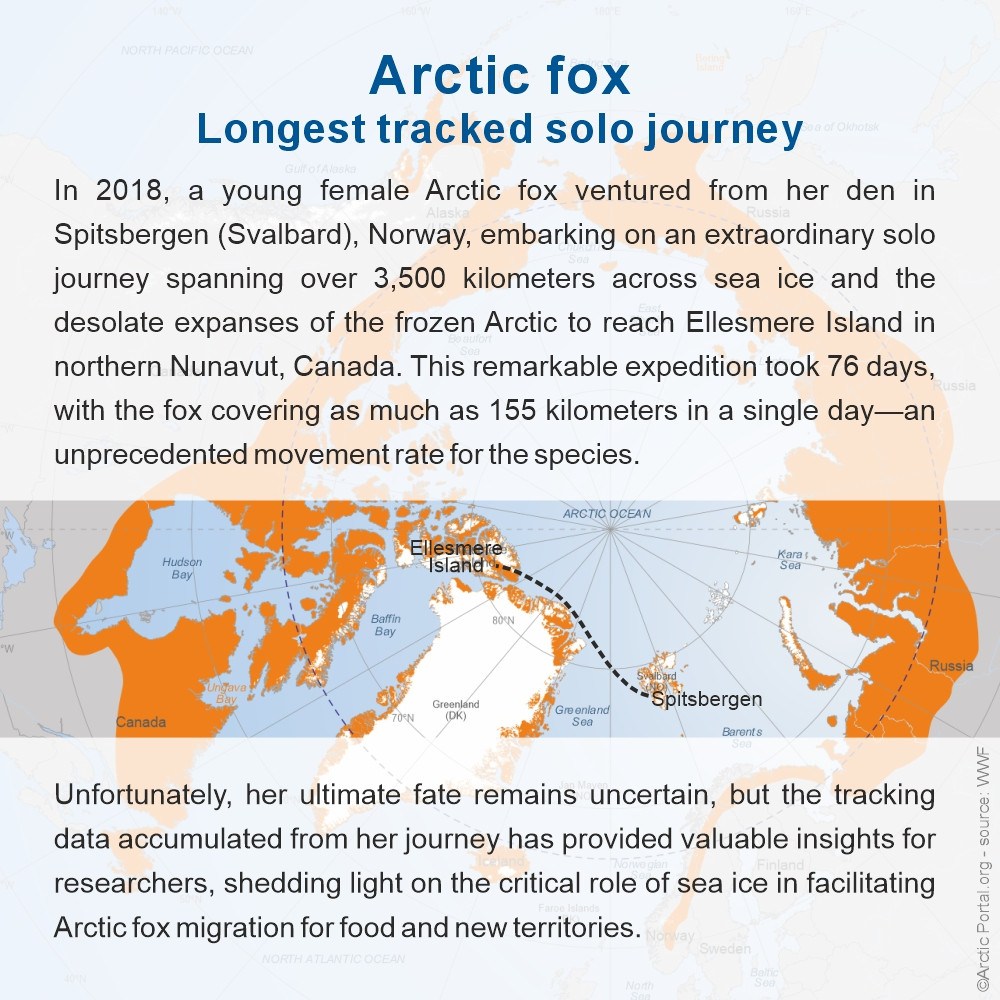Arctic foxes change their fur color depending on the season (this one is in winter clothes). They have dark-colored skin underneath their fur coats.
Arctic foxes, also known as white, polar, or snow foxes, boast a distinctive snow-white coat for effective camouflage in the arctic tundra, providing insulation against temperatures as low as -51°C (-60°F). Their rounded body shape aids in heat retention.
Active year-round, they build fat reserves in the fall to cope with winter scarcity, shedding their winter coats in the summer for brown and cream-colored fur.
Omnivorous by nature, Arctic foxes prey on voles, seal pups, and fish, displaying opportunistic hunting behaviors, such as scavenging from polar bear leftovers. Their sharp sense of smell and advanced hearing help detect food sources from a distance. During hunting, they pounce down with force to break the icy surface and secure a meal.
The average body length of the male is around 55cm (22 in) while the female averages 52cm (20 in) both sexes have a tail around 30cm (12 in) long. Arctic foxes live for three to four years in the wild and up to 14 years in captivity.
Subspecies
At least several hundred thousand Arctic foxes are believed to be in the wild. Based on genetic studies there are eight subspecies:
- Mainland Arctic foxVulpes lagopus lagopus
- Iceland Arctic foxVulpes lagopus fuliginosus
- Greenland Arctic foxVulpes lagopus groenlandicus
- Spitsbergen (Svalbard) Arctic foxVulpes lagopus spitzbergenensis
- Hall Island Arctic foxVulpes lagopus hallensis
- Bering Island/Sea Arctic foxVulpes lagopus beringensis
- Pribilof Islands Arctic foxVulpes lagopus pribilofensis
- Ungava Bay (Fort Chimo) Arctic foxVulpes lagopus ungava
Arctic foxes exhibit monogamous behavior in the wild. Typically, monogamous breeding pairs come together in April or May, welcoming a litter of 5-8 kits around 52 days later. The responsibility of nurturing the offspring is a shared effort between both parents and the young are weaned by the age of nine weeks.
The Arctic fox is the only land mammal native to Iceland.
Longest tracked solo journey
In 2018, a young female Arctic fox ventured from her den in Spitsbergen (Svalbard), Norway, embarking on an extraordinary solo journey spanning over 3,500 kilometers across sea ice and the desolate expanses of the frozen Arctic to reach Ellesmere Island in northern Nunavut, Canada. This remarkable expedition took 76 days, with the fox covering as much as 155 kilometers in a single day—an unprecedented movement rate for the species.
Unfortunately, her ultimate fate remains uncertain, but the tracking data accumulated from her journey has provided valuable insights for researchers, shedding light on the critical role of sea ice in facilitating Arctic fox migration for food and new territories.
View also our map of the Arctic fox distribution and movement.
Visit our Map Gallery Arctic Portal specializes in creating customized graphical maps that cover a range of significant Arctic topics with global recognition. We are continuously working on new maps and adding them to our Gallery.

